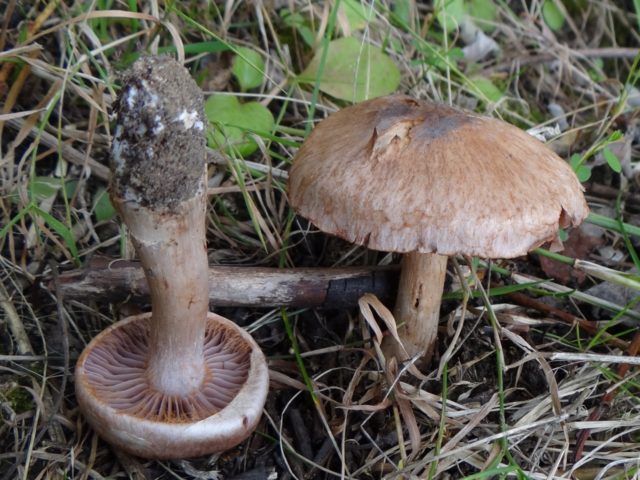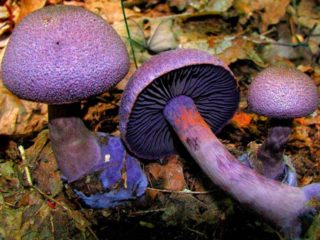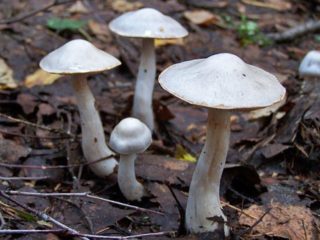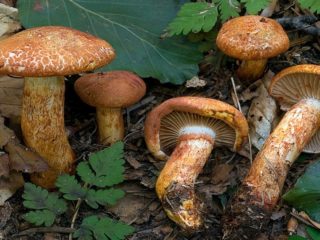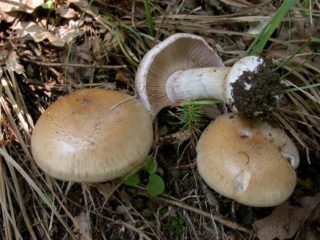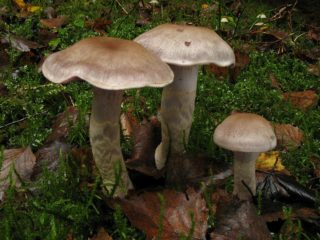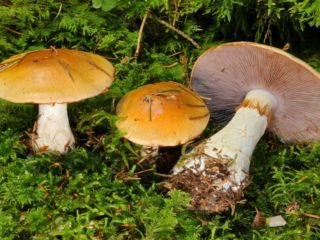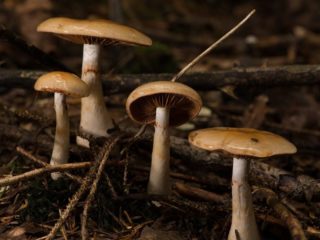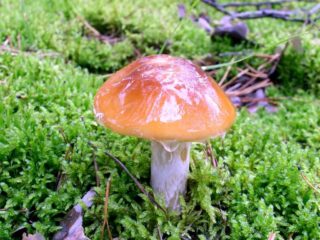Content
The blue-gray cobweb is a representative of the family and genus of the same name. The mushroom is also called blue cobweb, blue web and watery blue. This species is rare.
Description of the blue-gray webweed
This is a large mushroom with a cap, stem and hymenophore, the flesh of which has an unpleasant odor, has a gray-blue color and a bland taste. The surface of the almond-shaped spores is strewn with warts.

Traces of residual covering can be seen on the fruiting body
Description of the cap
Young specimens have a hemispherical cap, which gradually acquires a flat and convex shape.When dry, the surface becomes fibrous and slimy to the touch. Young dove-blue webworts have a bluish cap, which becomes lightish-ochre with age. The color does not change at the edges.
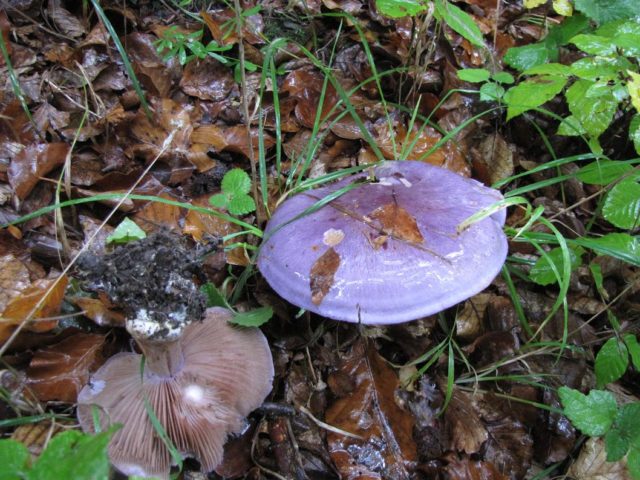
The hymenophore has a lamellar type of structure
The hymenophore is formed by flat elements - plates, which are fused to the stalk with the help of a notch. In young specimens they are bluish, soon turning into dark brown.
Description of the leg
The dove-blue spider web has a stalk up to 4-7 cm high and up to 2.5 cm thick. Closer to the base, a tuberous thickening can be seen.
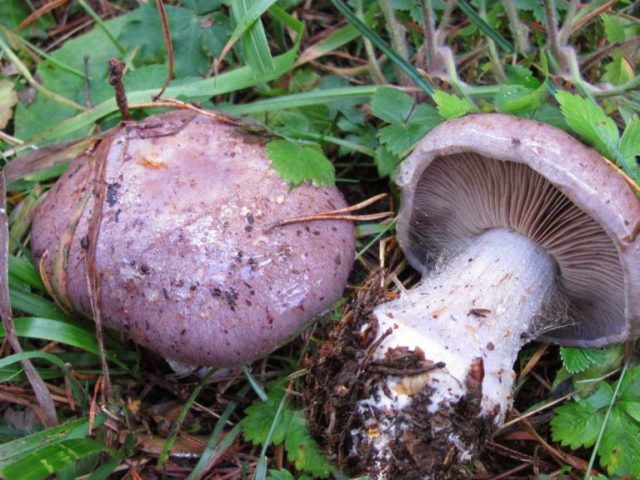
The stem of the mushroom is colored to match the cap
The color of the leg is bluish, the lower part is ocher-yellow.
You can learn more about the characteristics of the mushroom from the video:
Where and how does it grow
The habitat of the dove-blue spider web is the regions of North America, as well as the European continent. The mycelium spreads in groups and colonies in mixed and broad-leaved forests, forming a mycosis on deciduous trees. In Russia, the species can be collected in areas of the Primorsky Territory.
Is the mushroom edible or not?
Blue-gray webwort is not easy to find. This rare mushroom belongs to the edible varieties of the 4th category. When cooking, it is most often served fried, subjected to preliminary boiling (25 minutes). When dried and pickled, the fruiting bodies turn black.
Doubles and their differences
The mushroom has several false doubles. These include:
- Anomalous cobweb: a member of the same family, inedible. It has a smooth, dry and silky surface. Its shade is grayish-brown with purple. The cylindrical whitish-purple leg reaches a height of 7-10 cm. Mushrooms spread in the form of small groups, as well as individually.More often they can be found in the ground or on leaf litter. Fruiting time begins in August and lasts until the end of September. Habitat: Norway, Bulgaria, France, Germany, as well as some areas of the USA.
The species can be distinguished by its convex cap, which turns into a flat one as it grows.
- White-purple cobweb: classified as conditionally edible. With age, the shape of the surface becomes convex and prostrate. Shiny and silky to the touch, the cap has a yellow-brown color, fading over time to off-white. The length of the leg is 8-10 cm. Its lower part is more slippery, with a purple color. The fruiting period lasts from August to the end of September. The variety is widespread in deciduous and coniferous forests, grows near oak and birch in small groups, prefers moist soil. Rarely seen.
The rounded bell-shaped cap reaches 4-8 cm
Conclusion
Blue-gray spiderwort is a rare edible mushroom common in coniferous and deciduous forests. Specimens can be distinguished by their bluish color, which changes to light ocher with age. The variety has several false doubles, which are easily recognized by the color of the surface and the shape of the cap.
